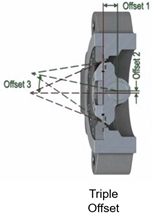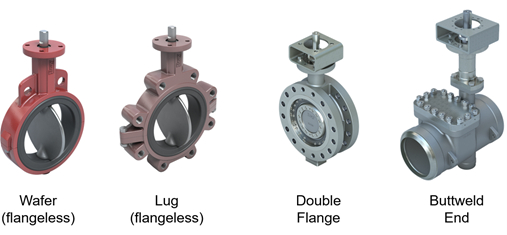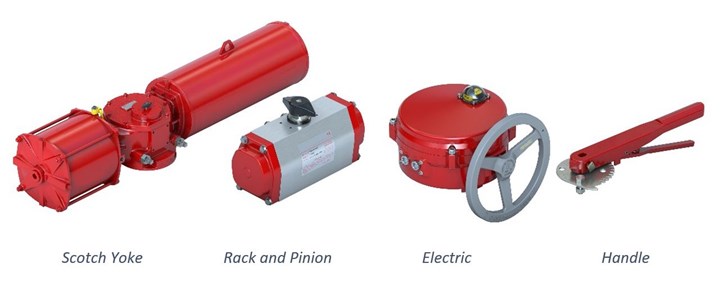What is a steam trap?
Steam Trap is an important component of a steam system. Steam traps have an important role to play in keeping the productivity and reliability of the steam system. The role of a steam trap is to remove condensate, air, and other incondensable gasses from a steam device while not allowing live steam to escape. The need for steam traps, requirements pertaining to their operation, standard modes of operation, troubleshooting, and related requirements are all addressed by this article guide.
Steam Trap
What is a steam trap?
A steam trap is among the family of automatic drain valve that determines steam and condensate. Steam traps hold back steam & discharge condensate under different pressure or loads. Steam traps should have a reasonable capacity to easily expel air and other non-condensable gases while maintaining live steam back. In industries, steam is used daily for healing purposes or as a driving force for mechanical control. Steam traps are being used to ensure that steam is not lost in such applications.
In an official statement, ANSI defines a steam trap as:
“Self-contained valve which automatically drains the condensate from a steam containing enclosure while remaining tight to live steam, or if necessary, allowing steam to flow at a controlled or adjusted rate. Most steam traps will also pass non-condensable gases while remaining tight to live steam.”
Why is a steam trap needed?
In simple words, steam traps are being used to eliminate condensate and non-condensable gasses from the steam system.
Steam is produced as the water vaporizes to change its state to gas. In order for the phenomenon of vaporization to occur, the water molecules should have enough energy to break the bonds between molecules. This energy provided to transform a liquid into a gas is called ‘latent heat.’
The steam produced by the boiler provides the heat energy needed to heat the product. Once steam loses its energy by heating the product in the process, the condensate is formed. A majority of the energy found in steam is often wasted due to radiation leaks from valves and fittings. Since this heat is lost, the steam is condensed and become saturated. If this condensate is not removed instantly as soon as it develops, the operational performance of the device can be minimized by slowing down the heat flow to the phase. If condensate is present in a steam system it will cause physical harm due to water hammering or corrosion.
In the bottom of a horizontal conduit, the condensate is collected with steam moving above it. If the condensate builds up, it will create a dense mass of incompressible water that moves at high speed. As a pipe bend, fitting, or valve abruptly blocks the slug of water, it may cause mechanical damage to the pipe or fitting.
It is similarly important to eliminate air and other non-condensable gasses from the steam system for four critical aspects.
- When the operation is resumed, if the air is present in the system steam is not able to enter, until the air is vented out.
- An air-steam mixture has a temperature far below the steam temperature, which reduces the transmitted heat.
- Air slows-through the heat transfer as it clings to the inside surface of the pipe or vessel.
- Dissolved in condensate, non-condensable acid gasses that corrode the system.
How does a steam trap work?
All steam traps operation can be categorized under one of three fundamental working principles: velocity, temperature, or density. Over time, various types of steam traps have been built to accommodate different applications. The important function of a steam trap is the ability to differentiate between steam and condensate. Various types of steam traps use various operating criteria and methods to differentiate between steam, condensate, and air. When categorized according to these operating principles, each type has advantages and disadvantages which must be addressed when choosing a steam trap for a particular application.
How many different types of steam traps are there?
Steam traps can be divided into two main types owing to their working principles, they are:
- Mechanical steam traps: Mechanical steam traps work on the concept of specific gravity, as compared to other types of steam traps that depend on temperature change or velocity/phase change. In mechanical cages, the valve opens and shuts due to the displacement of a float that rises and falls with a condensate surge.
There are two major designs of mechanical traps: float traps and inverted bucket traps. Float traps generally use an enclosed spherical float, whereas inverted bucket traps use a buoyant, cylindrical cup turned upside down.
Buoyancy is a key element working at the core of all types of mechanical traps, but the mechanisms and operating concepts are a little different.
- Ball float steam trap: It incorporates the effect of both temperature and density. A ball float opens the primary valve as enough condensate reaches the trap to raise the float, discharging the condensate. When the machine drains, the ball drops and the valve shuts down. A separate thermostatic component at the top of the trap gets open for the release of air and non-condensable gases, as soon as they induce a slight temperature drop in the trap.
Ball float steam trap
- Inverted bucket steam trap: It employs an upside-down bucket or an open float, which works on the density difference of steam and water. Steam flowing under the inverted and submerged bucket allows the vapor to float and shut the discharge valve. Condensate filling the trap allows the bucket to sink, releasing the trap valve to remove the condensate. A small vent at the top of the bucket allows the stored air to flow through to discharge the condensate.
Inverted Bucket Steam Trap
- Thermodynamic steam trap: Thermodynamic steam traps are appreciated for their small size and flexibility over a wide range of pressures. They may have a basic construction and work either horizontally or vertically. These properties make thermodynamic steam traps a popular alternative for a wide range of tracing, drip, and light flow steam applications.
There are two basic types of thermodynamic steam traps: thermodynamic disk and thermodynamic impulse (thermostatic steam trap).
- Thermostatic steam trap: The pressure determines the temperature of saturated steam. In the steam chamber, steam loses the enthalpy of evaporation (heat), creating condensate at steam temperature. As a consequence of any more heat loss, the condensate temperature will decrease. A thermostatic trap will allow the condensate to pass when this lower temperature is observed. When the steam enters the trap, the temperature rises and the trap shuts.
Thermostatic Steam Trap
- Thermodynamic steam trap: Thermodynamic traps are the most common type of traps, they are built on the theory of velocity. Condensate and air reach the trap and travel into the gate, heating, and control area. When steam or flash steam enters the entry, the flow speed rises and the disk is pulled towards the seat. The disk is closed with rising pressure in the control chamber. The controlled swelling of vapor pressure over the sealing face of the disk causes the trap to open up again and controls the speed of cycling.
Thermodynamic steam trap
Why are steam traps so important?
It costs money to produce and hold steam for process and space heating in the factory. That is too costly to waste. Steam is taken from a furnace to thousands or hundreds of branches. The steam trap prevents the steam from escaping out of the device at the end of each branch.
If condensate is not extracted, flowing steam and small waves within the pipe can be pushed together with faster-moving steam. The force of the steam behind the plug produces the water lull like the strength of a battering ram, if one of the waves hits the top of the pipe basically plug. This water trick will ram into teas, knees, pumps, floats in some traps, and other device equipment. This behavior can be very damaging and is one of the types of water hammer.
Steam, condensate, and air will share the same space inside a heat exchange unit. As condensate, air, and non-condensable gasses are separated as soon as they are created, the steam has more surface to transmit heat energy. Steam in the presence of water or air is an energy transfer medium that is less effective than dry steam.
What happens if a steam trap blows through?
If the malfunction of a single trap is overlooked, some steam can blow out and be released into the atmosphere. Steam costs an average of $5/1000 lb to produce, thousands of dollars can be lost every year. Current trap surveys have found that the average faulty trap losses 50 lb of steam per hour. The annual loss amounted to more than 400,000 Ib of steam at a rate of $2044. Multiply this by 100 to estimate the scale of a standard steam machine, and minor steam losses begin to add up to real money. Small traps are the secret to saving steam, not because they are vulnerable to collapse, but because there are several of them.
Functionally, a blow-through trap can have effects that extend into its heat exchange system. If the failed trap is attached to the condensate return line in which the other traps are discharged, the unexpected amount of live steam can pressurize the return line, causing backpressure for the other traps. Any steam traps do not work properly under high backpressure. In either case, the elevated back pressure may cause condensate to back up in other parts of the system.
What happens if a steam trap locks shut and Won’t discharge?
When the trap on the steam line fails closed, the closed valve does not allow the steam and condensate to flow through it and accumulates in the line. The condensate continues to move to low spots and collect there, with the ability to partially obstruct the flow of steam and cause a water hammer. If the line is exposed to temperatures below zero, the condensate can freeze and the pipe may be broken.
Some major problems that can be seen are:
- Water Hammer and pressure surge.
- Water Logging in the process.
- Damage to piping and Process equipment.
- Compromise safety.
What makes one type of trap better than another?
It totally depends on the application and operating requirements of a trap that is to be used. It also depends on what is expected from a steam trap to do. Steam traps are commonly used for the following requirements:
- To minimize steam loss.
- To draw maximum output from the heat exchange equipment that is used.
- For a smooth operation that is failsafe and trouble-free.
- Increase the lifespan of equipment present in the system.
- For reliability of operation even under dirty steam conditions.
Where should traps be located?
Accessibility, all traps will crash, and fail. Traps must be tested periodically so that the damaged trap does not waste steam for months or years. The inspection method is made simpler if the trap can be approached effortlessly. Often, a list of the trap positions makes it easy to locate all the traps.
Below the machinery is being drained. Although the heater coil and its steam trap will work at 250 psi steam pressure, the condensate must be pulled into the trap at some point of gravity. With most heat exchangers, the thumb rule is to position the trap inlet at around 10 to 12 inches. Below the relation of the condensate drain. A 6-inch dirt pocket should be given to shielding the trap from dirt and size.
Steam mains need some additional care since high-speed steam makes it difficult to remove the condensate. The drip leg should be adequately designed, the same height as the mainline, up to and above 4 in., use one-half of the mainline size, but not less than 4 in.
Close to the facility being emptied. As noted above, the flow of gravity carries the condensate to the trap. Around the same time, air and steam are being pushed upward through the pipe. To mitigate issues with this counter-flow, stop long pipe runs to the steam trap.
In summary.
Steam traps are safety equipment that is employed to increase productivity and at the same time operation cost of the process is lowered. We have provided a brief introduction to the steam trap in this article. STV is a professional China steam trap manufacturer, please feel free to contact us if you have any questio


































